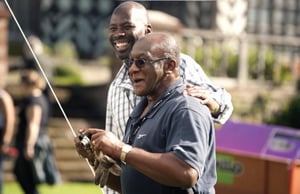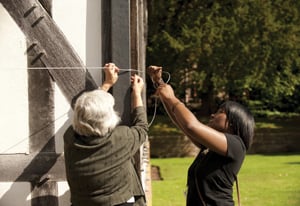Thinking differently about volunteering
Rebecca White on how to improve volunteer diversity


Founded in 1895 by three Victorian philanthropists, today the National Trust enjoys the support of more than 56,000 volunteers. There is a keen awareness of the need to respond to an increasingly competitive market and appeal to a wider demographic. The Trust must adapt to meet the needs of an audience faced with greater choice and higher expectations. Mark Crosby, National Volunteering Manager, explains: “As we look to become more relevant to more people it is important our approach to volunteering also changes. We need to look at ways to involve people anytime, any place, anywhere! We need to look at ways for people to gain and share skills at all levels so they are not just a ‘pair of hands.’ We also need to adapt our approach to make sure we are relevant to a diverse range of people – people who don’t currently see volunteering or the Trust as for them.”
Analysis of its annual volunteer survey highlighted that many volunteers felt their skills and experience were underused. One respondent from 2009 wrote: “Taking each volunteer’s skills into consideration, I believe volunteers can be given important projects to manage, just as regular staff members would.”
Six key areas of development have been identified and formed the basis of the Trust’s vision for volunteering. The first is to invest more in managing and involving volunteers, through developing the confidence and skills of volunteer managers – some of whom will be volunteers themselves. This includes the tricky area of communication; a big challenge with such a large organisation. At Coughton Court in Warwickshire, a new volunteer-led support and development team has been developed and is taking the lead in this area. The second aim is to offer more diverse opportunities. Trust managers are being encouraged to be more creative in the way new roles are developed and to be open to designing a role to fit around someone’s skills rather than taking a ‘one size fits all’ approach. Similarly, the third area looks at organising volunteering in a more flexible way so that those who can only offer a couple of hours at a time, or who can’t commit to every week, can still get involved.
The fourth challenge is to develop a more dynamic volunteer offer – one that changes from time to time. The aim is to give Trust supporters a reason to keep checking back to see what’s new. As well as checking out the annual events programme, in the future people will be checking out the annual volunteer programme. A number of Trust places have been offering family volunteering experiences, which is a great way of engaging with a rapidly growing audience. A seven-year-old volunteer recently described his experience of rhododendron bashing at Attingham Park in Shropshire as “better than Legoland”. Family volunteering groups at Upton House in Warwickshire lead cookery demonstrations, meet and greet visitors, and undertake outdoor conservation work.
The fifth area of focus is a bigger challenge, requiring a real shift in the Trust’s current working culture to allow volunteers to contribute at every level of the organisation – beyond just the day-to-day work. Volunteers can be from all walks of life and can bring with them a huge range of skills and experience. The Trust aims to make the most of this through matching the right people with the right roles, and remembering that the word ‘volunteer’ simply means that someone donates their time for free; it doesn’t describe their skills or experience.
Finally, the sixth key area is developing opportunities to encourage new audiences. This has been a strong focus for the Heritage Lottery funded ‘Whose Story?’ project, which seeks to connect with under represented communities, more specifically Black and Minority Ethnic communities. Through identifying the barriers to getting involved, the project team have been careful about the language they use to promote opportunities, conscious that for some the word ‘volunteer’ does not appeal. They have taken a fresh approach to recruitment, offering informal drop-in days outside what can be an intimidating Trust environment, matching new volunteers up with ‘buddies’ and providing diversity training for staff and volunteers. The Trust’s 2020 vision and Going Local strategy has provided a steer for this kind of work.
It’s great to see the Trust embracing change, and not getting stuck in the past. To achieve its ambition to think differently, it will have to take some risks, try new things, and learn from its mistakes. It plans to start by thinking differently. The next challenge is doing differently.
Join the Discussion
You must be logged in to post a comment.